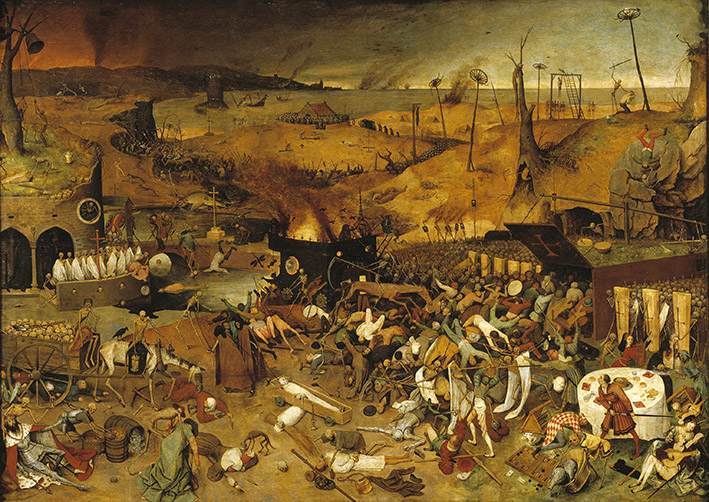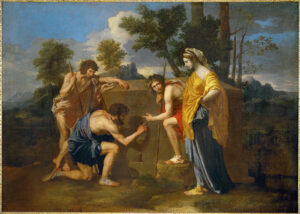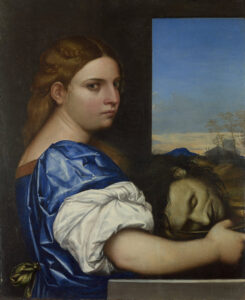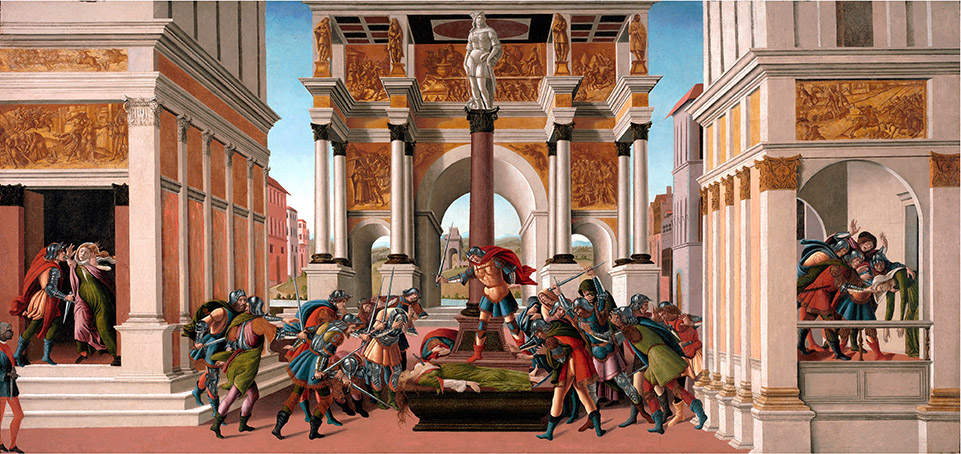
Chen Liu teaches at Tsinghua University and was a HYI Visiting Scholar from 2018-19.
What is your book about?
My book discusses the theme of death in Renaissance art and culture. Its English title, The Renaissance Gaze at Death, is slightly different from its Chinese title, which translates literally as “Gazing at Death: The Other Renaissance.” As we all know, Renaissance means “rebirth,” but that’s just one side of the story; the other side, which has often been neglected, is death. My book turns Renaissance around to show this “darker” side of the story. Combing art historical materials with social and cultural studies, I try to explore how people confronted, perceived, and described death in an age of rebirth.
“Gazing” is not simply “looking.” Readers who are familiar with twentieth-century French philosophy may well remember Jean-Paul Sartre or Michel Foucault’s ideas of the gaze (French le regard), while those who study ancient philosophy may recall the Greek theoria, which in Plato’s works meant “contemplation” or “speculation.” Both interpretations are fine, so long as the reader understands that in my book what is being gazed at is at once unique and universal. Has Death been objectified under the gaze of Renaissance artists? Have they, by contemplating and depicting death, eventually come to terms with it? I expect my readers to reach their own conclusions.

Pieter Brueghel the Elder: Triumph of Death, c.1562, oil on panel, 117x162cm, Museo del Prado, Madrid.
An alternative way to read The Renaissance Gaze at Death is to take it as a virtual exhibition. Never before has death been so vividly portrayed as it is in the Renaissance. The twelve chapters of my book are conceived as twelve galleries, each featuring a particular type of characters represented in Renaissance art. You’ll meet heroines and heroes, tyrants and villains from classical mythology and ancient history, saints and martyrs, mothers and infants from biblical stories, and eventually all mortal beings. You’ll see how they die, again and again, in the artist’s imagination and reinvention. The last gallery is dedicated to Arcadia – Even in idyllic Arcadia, there is Death, as the French painter Nicholas Poussin’s painting Et in Arcadia ego poignantly suggests. I try to give my readers an immersive experience that will be moving, haunting, and thought-provoking. What does death mean to people living in an age of rebirth? If we knew the answer, we might finally understand the Renaissance.

Nicolas Poussin, Et in Arcadia Ego, 1638-1640, oil on canvas, 85x121cm, Louvre Museum, Paris
This book is also an attempt to integrate my research interest into the larger concerns of our time. Writing during the coronavirus pandemic, I couldn’t help thinking of the bubonic plague that struck Europe in the fourteenth century. The Black Death marked the end of the Middle Ages and the beginning of the Renaissance. Could the pandemic we’ve been through, for all its destruction, offer a similar opportunity for radical change? There’s no easy answer to this question, but I hope my book will serve as a reminder of the profound implications of the Renaissance.
What inspired you to start writing on this topic?

Sebastiano del Piombo, Judith (or Salome?), 1510, oil on panel, 54.9×44.5cm, National Gallery, London.
The inception of The Renaissance Gaze at Death came by way of a chance encounter with an enigmatic painting by the Venetian painter Sebastiano del Piombo in the National Gallery, London (an edited image is printed on the front cover of my book). In the painting, a young woman is moving towards an open window; on a metal salver she carries the greyish-green severed head of a man. She turns to look back at us, her expression hard to read – her lips are pressed closed but her eyes glint with emotion. The woman’s identity is not entirely clear – she could be Salome with the head of John the Baptist or Judith with the head of Holofernes, depending on whether we interpret her as villainous or heroic. The puzzle remains unsolved. Yet what struck me most was not her ambiguous identity, but her uncanny intimacy with the dead. It seems that the woman is inviting us to join her in contemplation of death, and by portraying her as such the artist has chosen to represent psychological truths rather than iconographical clarity. This work immediately sparked my interest in the theme of death in Renaissance art.
Can you describe a surprising or unexpected finding?
When I started researching on this topic, I thought I was going to tell only a dark story of the Renaissance. As my research expanded, I began to see a fuller, more complex picture. This period is remembered as a great cultural renewal, but it was also burdened with recurring plague pandemics, famines, wars and religious conflicts, which put life and death in close proximity to one another, so close that the living was forced to share their world with the dead. Only when people got used to such physical proximity to death were they finally able to keep a psychological distance from it, to gaze at it in contemplation. For artists, this contemplative gaze was sustained in depicting death stories of mythological, biblical or other fictional characters. I am surprised to find that, given their obsession with death scenes, Renaissance artists almost never depicted the death of a friend, a family, a loved one, or anyone they knew in real life. For them death came as a double experience – in reality and in fiction. All art is fiction, but fiction can also be a constructive way of relating to death, by which Renaissance artists built a deeper connection with life, the past, the present, the self, and the world. And exactly this, I would say, is the brighter side of the dark story.

Sandro Botticelli, Story of Lucretia, c.1500, tempera and oil on panel, 83.8×176.8cm, Isabella Stewart Gardner Museum, Boston.
What are you working on next?
I’m currently researching for my next book, tentatively titled Ekphrasis and the Origin of Art History. Ekphrasis is a Greek word, which literally means “description.” As a rhetorical device, it refers to a literary description of or commentary on a visual work of art, either real or imagined. My research traces the historiography of visual arts to the ancient Greek tradition in which ekphrasis was employed, while also exploring its vitality in the modern practice of art history and criticism, as well as its versatile potential in teaching art history.
Learn more about the book (in Chinese) at the publisher’s website
Related Stories
Publication News
Fifteenth Book in the NTU & HYI Academic Book Series publishedMonday, November 25, 2024
